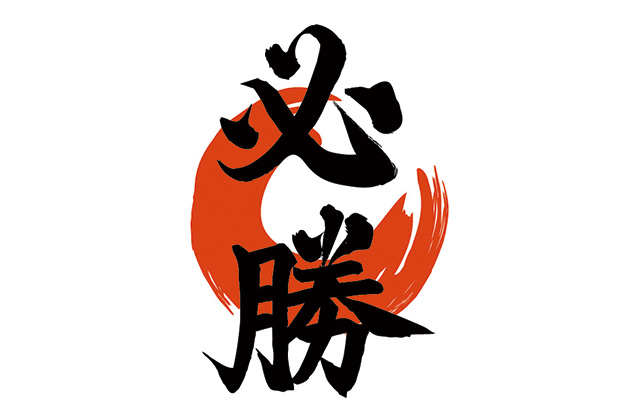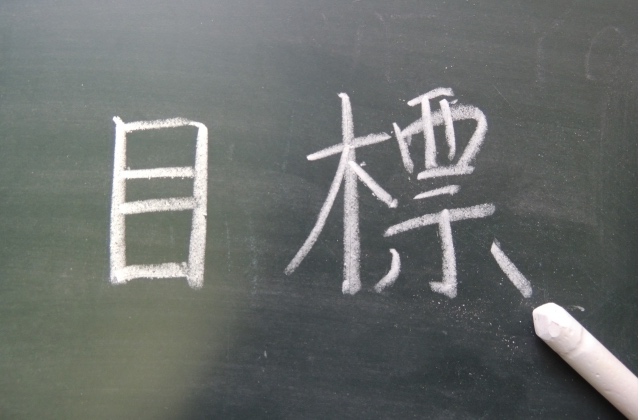TRG Info and Advice
For the Love of Learning, Part 2
So now that you have decided you want to learn kanji for real, here are some tips for setting goals, studying and putting your skills to the test.
First let’s talk about setting a goal. As with any aim, you have the mental challenge of psyching yourself up, and the physical challenge of how you actually go about achieving your goal. There are 2,136 basic kanji that, if mastered, will make you literate enough to read most newspapers, novels and manga in the original Japanese!
“The day you decide to do it is your lucky day!” – Japanese proverb
Do Your Mentals
According to John Fotheringham, multi-lingual author, there is a Holy Trinity of Motivation for dealing with the mental aspect of setting a goal.
1. You have to have social accountability. Tell your family, friends, and coworkers what you are planning to do. Blog about it, or make a bet ($50-$500, whatever amount will be slightly painful) with someone. The more people who know what you are trying to achieve, the less likely you are to slack off and give up!
2. You have to set a SMART goal: S= specific, M= measurable, A=attainable, R=realistic, T=time bound. For example, you could say you want to master one kanji per day for a month. It’s specific (master, as in be able to read it, write it and understand it), measurable (one per day), attainable (one kanji per day for a month is doable), realistic (about 30 kanji in a month seems reasonable) and time bound (for a month).
3. “Nothing is particularly hard if you divide it into small jobs.” – Henry Ford
You have to take baby steps. One stroke at a time, one kanji at a time, one day at a time, etc. Anne Lamont’s book, Bird by Bird, may provide additional inspiration.
Some other tips from Mr. Fotheringham include not getting caught up in perfectionism (doing a little is better than doing nothing!) or procrastinating with lame excuses like: no time, no money, too old, too stupid. Barry M. Farber, radio talk show host and “language-learner enthusiast,” suggests utilizing those hidden moments of otherwise unproductive time (like waiting in line or washing the dishes) to study kanji. There are a variety of resources, many of them free, and it is just a matter of finding the right tool for you!
Scalpel, Please
Which brings us to the second part of achieving your Kanji Proficiency Goal, the tools! According to Benny Lewis, the self-proclaimed Irish Polyglot, learning a language requires a little investing in some helpful resources.
Remembering the Kanji: A Complete Guide on How Not to Forget the Meaning and Writing of Japanese Characters by James Heisig, takes the method of rote memorization and turns it on its ear! With stories and pictures, Heisig capitalizes on our brain’s need to be entertained and utilizes our imaginative memory. Michael Rowley’s Kanji Pict-o-graphix takes a similar approach, but is mostly image-based. Crazy for Kanji by Eve Kushner breaks the characters down into thematic groups based on common parts, or radicals, like “water.”
Don’t forget a dictionary, too. Jim Breen’s WWWJDIC comes highly recommended for its ease in looking up kanji in a variety of ways, including the phonetic reading. Take advantage of this essential tool either directly online, or via the app.
Traditional paper flashcards in various sizes can be found at any Japanese stationary shop (they usually come on a key ring loop for easy flipping!). Write out your goal kanji for the week the old fashioned way, with a pencil or pen. Also download an app for your phone like Flashcards Deluxe or Anki with its spaced repetition system.
The more exposure you have to the kanji you are focusing on, the faster you will be able to both recognize their meanings and see the common strokes that link them to other kanji, so surround yourself with Japanese. If you are in Japan, get out there and walk around. Try to decipher signs, menus, and news feeds. Make friends and beg them to text you only in Japanese.
If you are still in your home country, put up posters or fliers with kanji on them, write out your own inspirational kanji on notecards and tack them to your mirror. Stash Japanese comic books in the bathroom, in your car, next to your bed and in your backpack for those “hidden moments” of study time. Kick back with FluentU, a personalized, video-based language-learning database. Find a Japanese language tutor and set up a chat where you only communicate in Japanese.
One more piece of advice from Mr. Fotheringham is to study right before you go to sleep, and upon waking. Apparently, the mind digests during the night the last thing to enter it before bed. Review that same kanji upon waking and it will be more likely to stay with you.
Once you have completed your first goal, look online for a Japanese self-test to see how far you have come, or check out the Japanese Language Proficiency Test (JLPT) website for guidance in setting your next goal, and remember…
“The difference between the novice and the master is that the master has failed more than the novice has tried.”
– Koro Sensei from the anime Ansatsu Kyoushitsu
To return to Part 1 of this article, please click here.
Want to know more? Click here for a collection of articles on everything Japanese.










